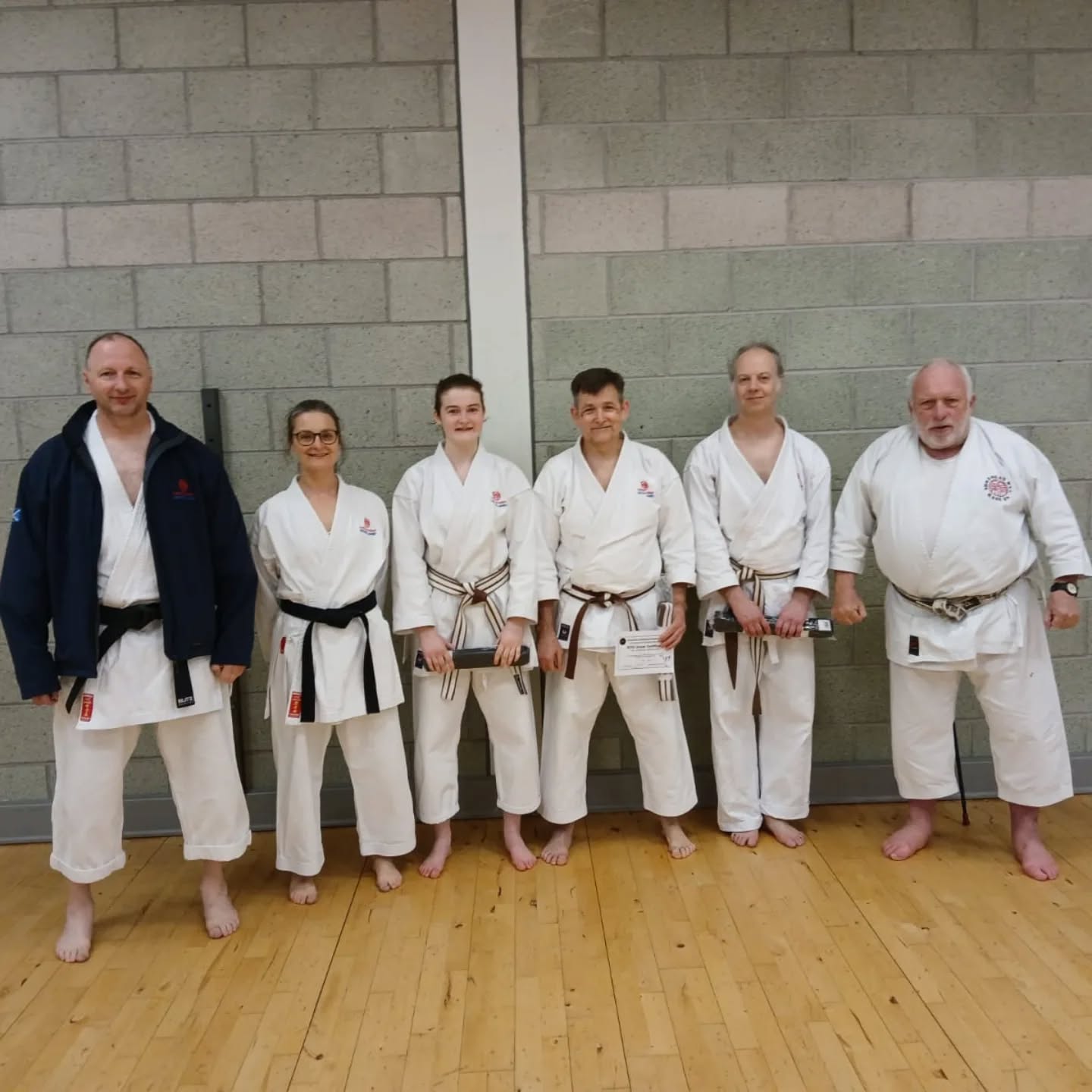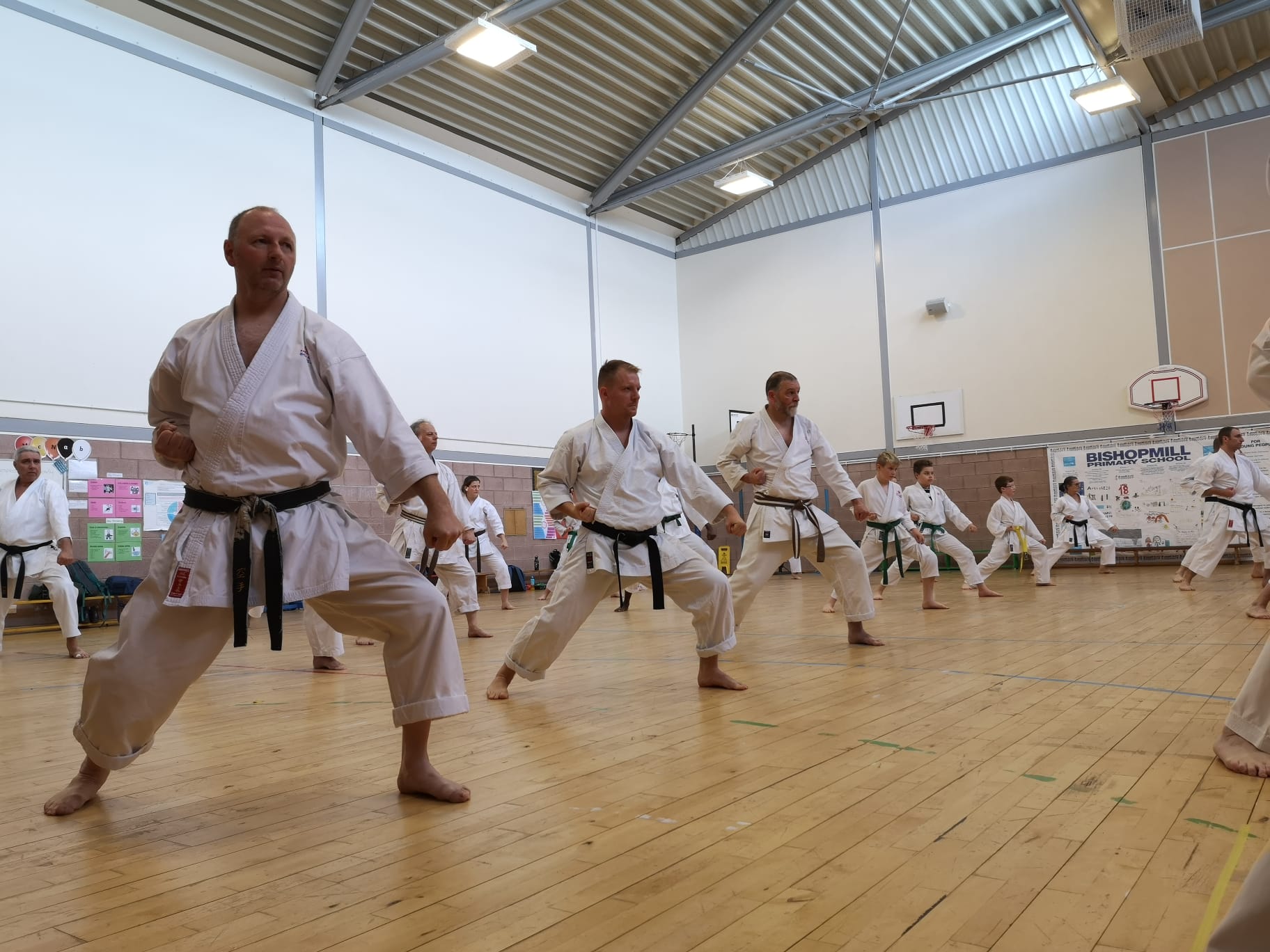Class Times
Class Times
Monday (Elgin)
6pm-7pm: Junior Grades (under 18)
7pm-8pm: Mixed Grades (teenage + adult)
7pm-8.30pm: Advanced Grades (teenage + adult)
Tuesday (Forres)
6pm-7pm: Junior Grades (under 18)
7pm-8pm: Mixed Grades (teenage + adult)
Wednesday (Elgin)
6.30pm-7.30pm: Mixed Grades (all ages)
6.30pm-8pm: Advanced Grades (teenage + adult)
Thursday (Elgin)
6pm-7pm: Junior Grades (under 18)
7pm-8pm: Mixed Grades (teenage + adult)
7pm-8.30pm: Advanced Grades (teenage + adult)
Karate is one of the Worlds most popular martial arts. Modern day Karate was developed in Okinawa, a small Island off Japan. Karate is a highly effective system of self-defence, and also an excellent form of exercise that promotes a number of life skills and values.
Resources
Karate Training
Karate practise is generally divided up into three components: Kihon (basics), Kata (forms) and Kumite (sparring).
Kihon
Kihon (basics) covers various strikes, blocks, kicks, stances and movements one might need to use in self-defence. Students practise these in lines each class so that the techniques are refined and become instinctive.
Kihon, or basic practise, allows students to develop an understanding of their body and how it can be used as most effectively as a weapon, for example, how to generate maximum power with minimum effort.
Kata
Kata (forms) is often referred to as the art form of karate. Each kata (form) is a traditional predetermined pattern of movements that promotes a number of self-defence principles. Kata practise also develops coordination, balance, agility, strength and speed.
Kumite
Kumite (sparring) is where techniques and principles learnt in Kihon (basics) and Kata (forms) are applied against an opponent. Kumite can vary greatly, depending on the students level of experience. For example, beginners only practise pre-arranged kumite. This is where both the attacker and defender know exactly which techniques will be used and when. They do this in a slow and controlled environment.
Traditional Shotokan karate has many benefits to the practitioner. Don`t take our word for it though – feedback from students and their families on their experiences is a valuable part of our quality assurance.
Progression
Karate has a coloured belt (or ranking) system allowing students to set goals and measure their progress. As they progress and develop in both physical and technical ability, each component becomes more advanced, giving them a new challenge and skill to develop take on.
As the student approaches their black belt, their technique, speed, coordination and stamina all become natural as a result of strong practice. It is at this stage that the serious student discovers that his or her study of karate has only just begun. The object of true karate practice is the perfection of oneself through the perfection of the art.




